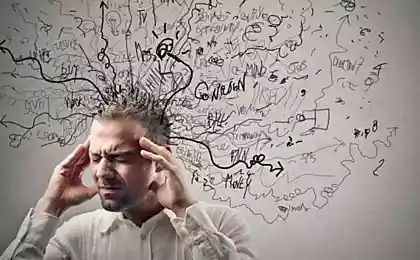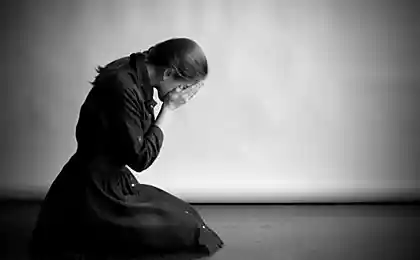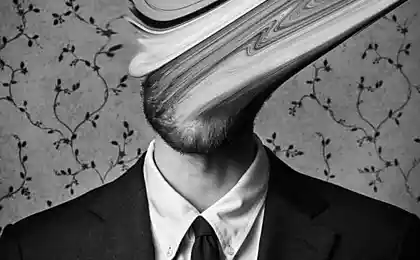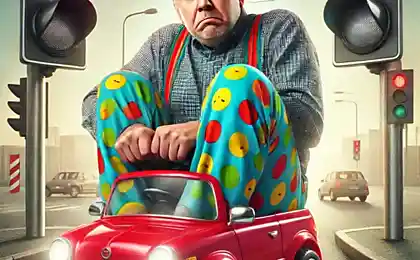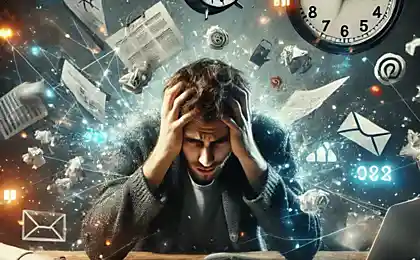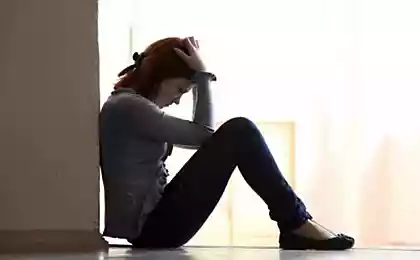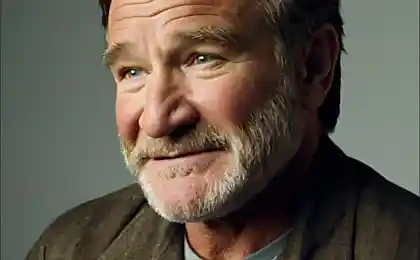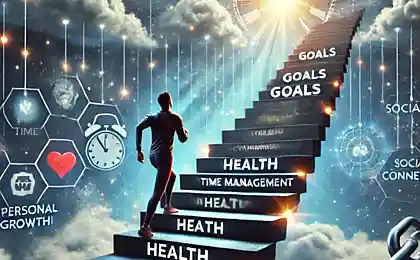283
What is learned helplessness and how to get rid of it
What is learned helplessness and how to get rid of it
Learned helplessness is an insidious psychological mechanism that leads us to believe that we are doomed to failure without even trying. They are like invisible chains that constrain potential and block the path to achievement. Understanding this phenomenon is the first step towards liberation.

Overcoming learned helplessness is breaking down the invisible barriers we have created in our own minds.
The Origin of Concept: How We Learned Helplessness
The concept of learned helplessness was discovered by American psychologist Martin Seligman in the 1960s. While conducting experiments with dogs, the scientist noticed a strange phenomenon: animals that were previously subjected to inevitable electrical discharges did not even try to avoid pain when the opportunity arose. They just lay there and endured, although they could easily escape.
Further research confirmed that this phenomenon is characteristic not only for animals, but also for humans. When a person repeatedly faces uncontrollable negative events, he or she develops a belief in his or her own powerlessness. Over time, this belief extends to new situations, even those where one could objectively succeed.
The neurochemistry of helplessness
Modern research shows that learned helplessness is associated with changes in the work of neurotransmitters, especially serotonin and norepinephrine. Chronic stress and repeated setbacks in the brain reduce the levels of these substances, which leads to a weakening of motivation, energy and the ability to withstand difficulties. In fact, learned helplessness has much in common with the mechanisms of depression.
How to recognize learned helplessness in yourself
Learned helplessness is not always obvious. We often disguise it as “realism” or “common sense.” However, there are characteristic signs that may indicate the presence of this problem:
- Automatic denial of action. “It makes no sense to even try” is the first thought that comes up in the face of a new challenge.
- The perception of failure as permanent and comprehensive. “I always ruin everything” instead of “Something went wrong this time.”
- Internalization of the causes of failure. "There's something wrong with me" instead of "It was a difficult situation."
- Procrastination and postponement of important matters. This is often not laziness, but confidence in the futility of efforts.
- Chronic fatigue and apathy. When the brain is convinced that failure is inevitable, it saves resources by lowering energy levels.
The main difference between learned helplessness and ordinary caution or insecurity is its irrationality. A person refuses to act even when the objective chances of success are high and the risks are minimal. At the same time, a person sincerely believes that his passivity is the only reasonable choice.
Mechanisms of formation: where does learned helplessness come from
Learned helplessness rarely results from a single traumatic event. More often, this is the result of a long process of “learning powerlessness” that can begin in childhood:
Family roots
Parental overprotection, constant criticism, or inconsistent parenting can lay the groundwork for learned helplessness. When a child is not allowed to solve problems on his own or constantly points out his shortcomings, a basic belief is formed: “I can not cope on my own.”
School experience
An education system that focuses on assessment rather than development often becomes a source of learned helplessness. Regular failures in certain subjects can form a belief in one’s inability to learn in general.

The contrast between the growth mindset and learned helplessness determines our attitude to challenges and difficulties.
Professional factors
Working in a toxic environment where there is no link between effort and result, where criticism prevails and achievements are not noticed, is the ideal ground for the development of learned helplessness in adults.
Public influence
Social stereotypes, discrimination and prejudices can cause learned helplessness in entire social groups, which are indoctrinated with the idea of knowing inferiority or inability to change their situation.
Science-based strategies for overcoming learned helplessness
The good news is that learned helplessness can be overcome. Modern psychology offers effective tools to break this negative pattern.
Practical steps to get rid of learned helplessness
- Realize the problem. Recognizing the existence of learned helplessness is the first and most important step. Begin to notice the moments when you automatically give up an action for no objective reason.
- Rethink your interpretation of events. Practice cognitive reassessment: Replace “I can never” with “I haven’t found the right approach yet.”
- Create a control experience. Start with small tasks where success is guaranteed and gradually increase complexity. Every positive experience will strengthen your faith in yourself.
- Break down big goals into concrete steps. Large-scale tasks often cause a feeling of helplessness. Focus not on the end result, but on the next small action.
- Practice conscious persistence. Distinguish situations where you really need to step back from those where you are stopped only by learned helplessness.
- Find a supportive environment. People with a growth mindset can inspire by example and help you see opportunities where you previously only saw obstacles.
Transformation of thinking
Research shows that learned helplessness can be overcome by shifting from fixed thinking to growth thinking (Carol Dweck’s concept). People with a growth mindset see difficulty as an opportunity to learn something new, not as proof of their own worthlessness.
One of the most effective ways to transform thinking is to keep a success journal. Every day, write down even the smallest achievements and times when you have overcome your limiting beliefs. Over time, you will notice that such moments become more and more.
Technique "Counteraction of Attribution"
The technique, developed by psychologist Martin Seligman, helps change the way failure is explained. When faced with a problem, consciously look for external, temporary, and specific causes of failure instead of internal, permanent, and global ones. For example, replace “I’m a total loser” (internal, permanent, global attribution) with “I didn’t prepare enough for this particular task” (external, temporary, specific attribution).
Physical Activity as the Antidote to Helplessness
Regular exercise not only improves mood through the production of endorphins, but also creates an important experience of controlling your own body. Start with minimal loads and gradually increase their intensity, noting progress. This creates a powerful metaphor: if you can change your body, you can change your life.

Overcoming learned helplessness is like climbing a mountain – it takes effort but opens up new horizons.
When to seek professional help
If learned helplessness is deeply rooted and independent attempts to overcome it do not bring results, it is worth considering the possibility of working with a psychologist or psychotherapist. This is especially true if helplessness is accompanied by symptoms of depression or anxiety disorder.
Effective methods of professional help with learned helplessness are:
- Cognitive behavioral therapy (CBT), which helps identify and change dysfunctional thought patterns.
- Acceptance and Responsibility Therapy (ACT), which focuses on accepting life’s inevitable difficulties and performing actions consistent with personal values.
- Positive psychology aimed at developing the strengths of the individual and the ability to flourish.
Learned helplessness is not a sentence, but a habit of thinking that can be changed. Start with small steps, celebrate each success, and remember that every time you act against an inner voice that tells you that effort is useless, you loosen your grip on this destructive pattern.
Imagine a life where your decisions are based not on fear of failure, but on a conscious appreciation of opportunity. Where difficulties are perceived as challenges, not as evidence of their own failure. This life is available to anyone who is willing to work consistently to overcome learned helplessness.
Glossary
Learned helplessness
A psychological state in which a person or animal, faced with uncontrollable negative events, subsequently makes no attempt to improve their situation, even when such opportunities arise.
Attribution
Psychology is the process by which a person explains the causes of events or behavior (either by himself or by others). The nature of attribution largely determines whether learned helplessness is formed.
The Growth Mindset
A concept developed by psychologist Carol Dweck describes the belief that abilities and intelligence can be developed through effort, learning, and perseverance. The opposite of fixed thinking.
Fixed thinking
The belief that human abilities and qualities are immutable, innate characteristics that cannot be significantly developed.
Cognitive reassessment
A technique used in cognitive behavioral therapy to change the way a situation is interpreted to change the emotional response to it.
Neurotransmitters
Chemicals that transmit signals between neurons. An imbalance of certain neurotransmitters (serotonin, norepinephrine, dopamine) is associated with the development of learned helplessness and depression.
Cognitive behavioral therapy (CBT)
A form of psychotherapy based on the concept that thoughts, feelings, and behaviors are interconnected, and that negative thought patterns can be identified and changed to improve psychological well-being.
8 Signs Your Life Is Not As Good As You Think
6 Ways to Stop Fearing People Will Think You’re Boring

